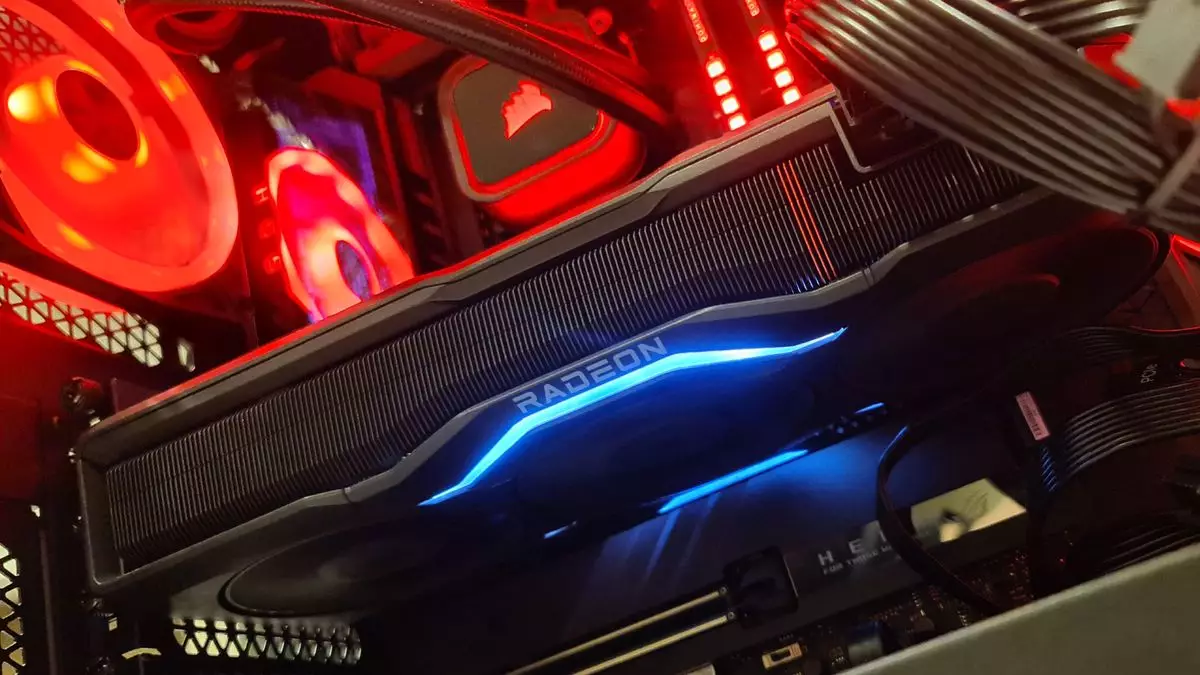The gaming hardware landscape is dynamic, with heavyweights like Nvidia and AMD constantly pushing the envelope of performance and technology. As the anticipation builds for Nvidia’s GeForce RTX 50-series and AMD’s Radeon RX 8000-series graphics cards, it’s crucial not to overlook the accompanying software enhancements crucial for maximizing the potential of these new products. One such advancement is AMD’s latest driver, Adrenalin 24.9.1, which introduces compelling features designed to enhance gaming performance significantly.
At the forefront of the Adrenalin 24.9.1 update is the second generation of AMD’s Fluid Motion Frames, known as AFMF 2. This technology is a notable progression from its predecessor, promising to boost gaming performance by as much as 2.5 times in selected titles. AMD has moved AFMF 2 from beta to full release, making it an integral part of their latest driver suite. This technology operates at the driver level, allowing users to toggle frame generation on or off without the need for game-specific setups.
The significance of AFMF 2 lies in its ability to work seamlessly across various gaming scenarios, providing enhanced frame generation capabilities. According to AMD, this iteration includes numerous optimizations and tunable settings that are expected to improve the overall frame generation experience. Notably, these optimizations leverage AI technology, aiming for enhanced quality, reduced latency, and improved performance, particularly on integrated graphics solutions.
AMD has presented statistics that suggest users can experience on average a substantial increase in frame rates when utilizing AFMF 2 in conjunction with other technologies like HYPR-RX and FSR 2. However, it is essential to approach these numbers with a degree of skepticism. The “2.5x gains” cited are contingent upon the use of these complementary technologies and might not be entirely attributable to AFMF 2 alone.
Initial tests performed on earlier builds of AFMF 2 indicated that while there were performance benefits, they were not as groundbreaking as AMD’s marketing may suggest. Users should temper expectations and recognize that while frame generation improvements are welcome, they may not completely transform the gaming experience. In other words, while AFMF 2 offers enhancements, it may not represent a seismic shift in performance.
The introduction of AFMF 2, despite its shortcomings, is not to be dismissed outright. For gamers engaged in titles that lack support for FSR 3, AFMF 2 can still provide a valuable edge by generating additional frames. For users equipped with AMD Radeon GPUs, particularly those in portable gaming PCs, the availability of this feature could be beneficial, ensuring a smoother experience even in more resource-constrained environments.
It’s also beneficial to point out that enabling AFMF 2 is straightforward, requiring users to activate the relevant settings within the Adrenalin software. This ease of use, alongside the capacity for significant boosts in performance, particularly when used with HYPR-RX, makes it an appealing option for a wide range of gamers.
Beyond AFMF 2, the Adrenalin 24.9.1 driver update also brings other noteworthy features, such as Geometric Downscaling. This enhancement is aimed at optimizing video playback in smaller windows, reducing visual artifacts and aliasing for a smoother viewing experience. Such features are indicative of AMD’s focus not just on gaming performance but also on overall graphical fidelity, aiming to enhance the multimedia experience across the board.
While AFMF 2 might not redefine the gaming landscape, it is a significant addition to AMD’s offerings that can enrich the gaming experience in various contexts. With this latest driver, AMD continues to position itself as a formidable player in the graphics space, ensuring that its users have the tools they need to maximize their gaming potential. As always, it remains essential for gamers to stay informed about these developments to make the most out of their hardware investments.

